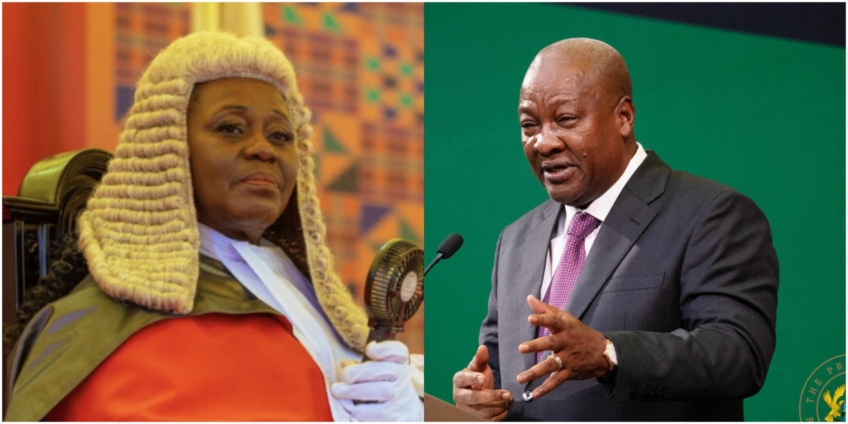adverts
Chief Justice Gertrude Torkornoo has formally submitted her preliminary response to President John Mahama in connection with multiple petitions calling for her removal from office, as the 10-day constitutional window for such a response expired on Monday, April 7.
The development marks a significant turning point in what has become a nationally watched legal and political episode.
The petitions, reportedly received by the president last month, have stirred widespread public debate over the constitutionally mandated procedures for removing a sitting chief justice.
adverts
In an earlier communication to the president, Justice Torkornoo requested copies of the petitions and a minimum of seven days to prepare her response.
Her request was rooted in the principles of natural justice, due process, and procedural fairness. With her response now submitted, the matter moves to the next constitutional phase.
Per Article 146(6) of the 1992 Constitution, when a petition is filed seeking the removal of the Chief Justice, the President is required to consult the Council of State before appointing a special investigative committee. The Chief Justice’s response is now expected to form a central component of the Council’s deliberations as they advise the President on the way forward.
If the Council of State advises in favour of proceeding, the President is constitutionally mandated to appoint a five-member committee to investigate the claims. This committee must include two Supreme Court Justices—one of whom is to serve as chair—and three other individuals who are not members of Parliament, the Council of State, or legal practitioners.
Meanwhile, a legal challenge has been mounted in the Supreme Court, with a hearing scheduled for April 9. The suit, filed by Member of Parliament for Old Tafo, Vincent Ekow Assafuah, questions the legality of the president initiating the removal process without first formally notifying the Chief Justice.
The case is set to test constitutional interpretations of Article 146, particularly the procedural safeguards embedded in the removal process of a Justice of the Superior Court. Observers note that the outcome of this challenge could influence how future petitions against judicial officers are handled.
What the Constitution Says
Article 146 of Ghana’s 1992 Constitution outlines a rigorous and structured process for the removal of justices of the superior courts, including the chief justice. Removal is only permitted on grounds of “stated misbehaviour”, “incompetence”, or an “inability to perform the functions of office due to infirmity of body or mind”.
Specifically, Article 146(6) provides that when a petition is lodged against the Chief Justice, the President, in consultation with the Council of State, must form a committee to investigate the matter and recommend whether removal is warranted. All proceedings under Article 146 must be held in camera, and the subject of the petition is entitled to defend themselves personally or through legal representation.
During the process, the president may, with appropriate advice, suspend the chief justice while investigations are ongoing. However, such a suspension can be revoked at any time.
What Happens Next?
With Chief Justice Torkornoo’s response in hand, the Council of State is expected to meet in the coming days to review the submission and advise the President. If the Council finds the petition worthy of further inquiry, the President will proceed to constitute the investigative committee.
Until then, the legal challenge before the Supreme Court and the Council’s recommendation will significantly shape the trajectory of this unprecedented case. The outcome could have far-reaching implications for judicial independence, executive-judiciary relations, and constitutional governance in Ghana.
Click the link Puretvonline.com | WhatsApp Channel to join the whatsapp channel
GOT A STORY?
Contact/WhatsApp: +233243201960 or Email: manuelnkansah33@gmail.com


